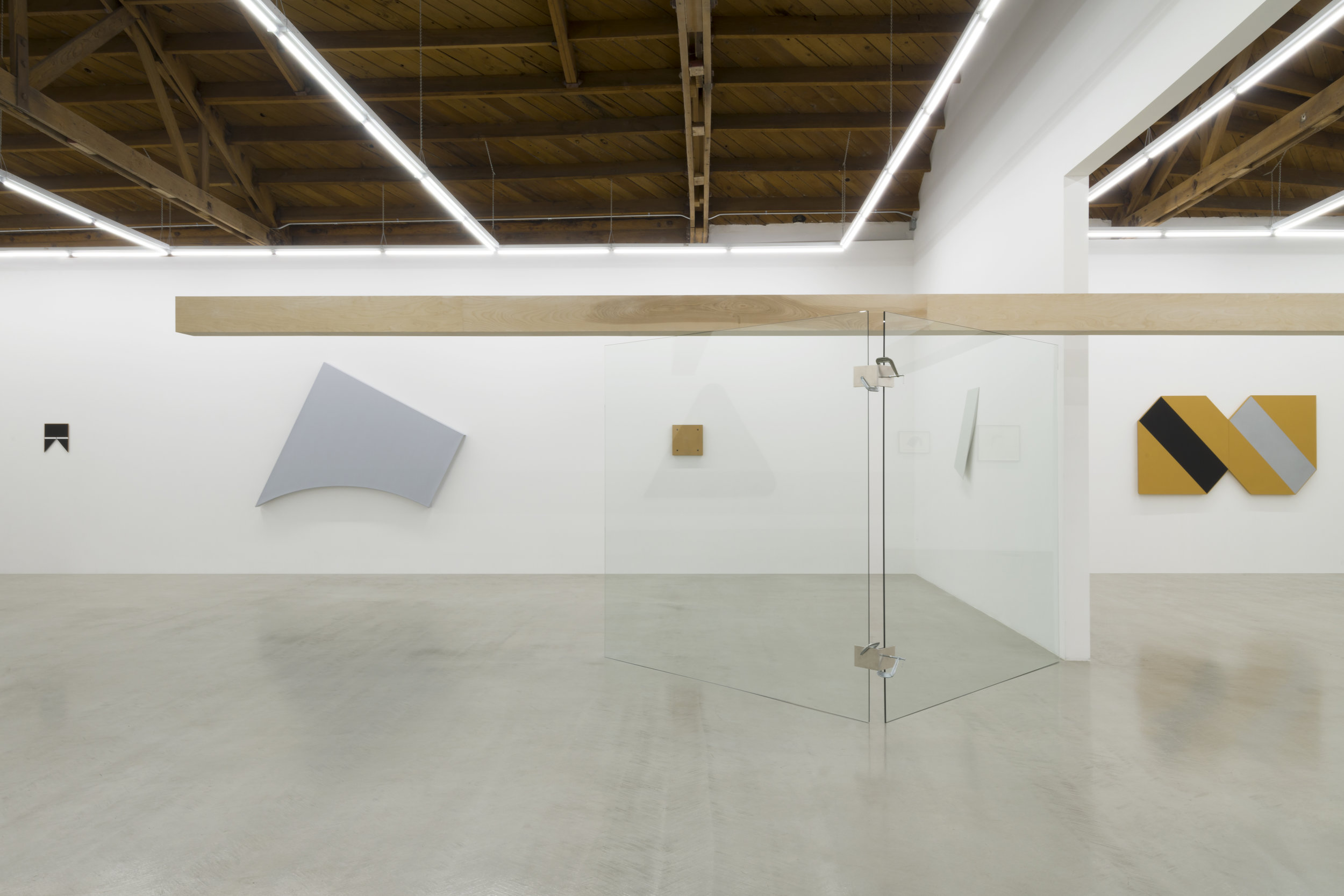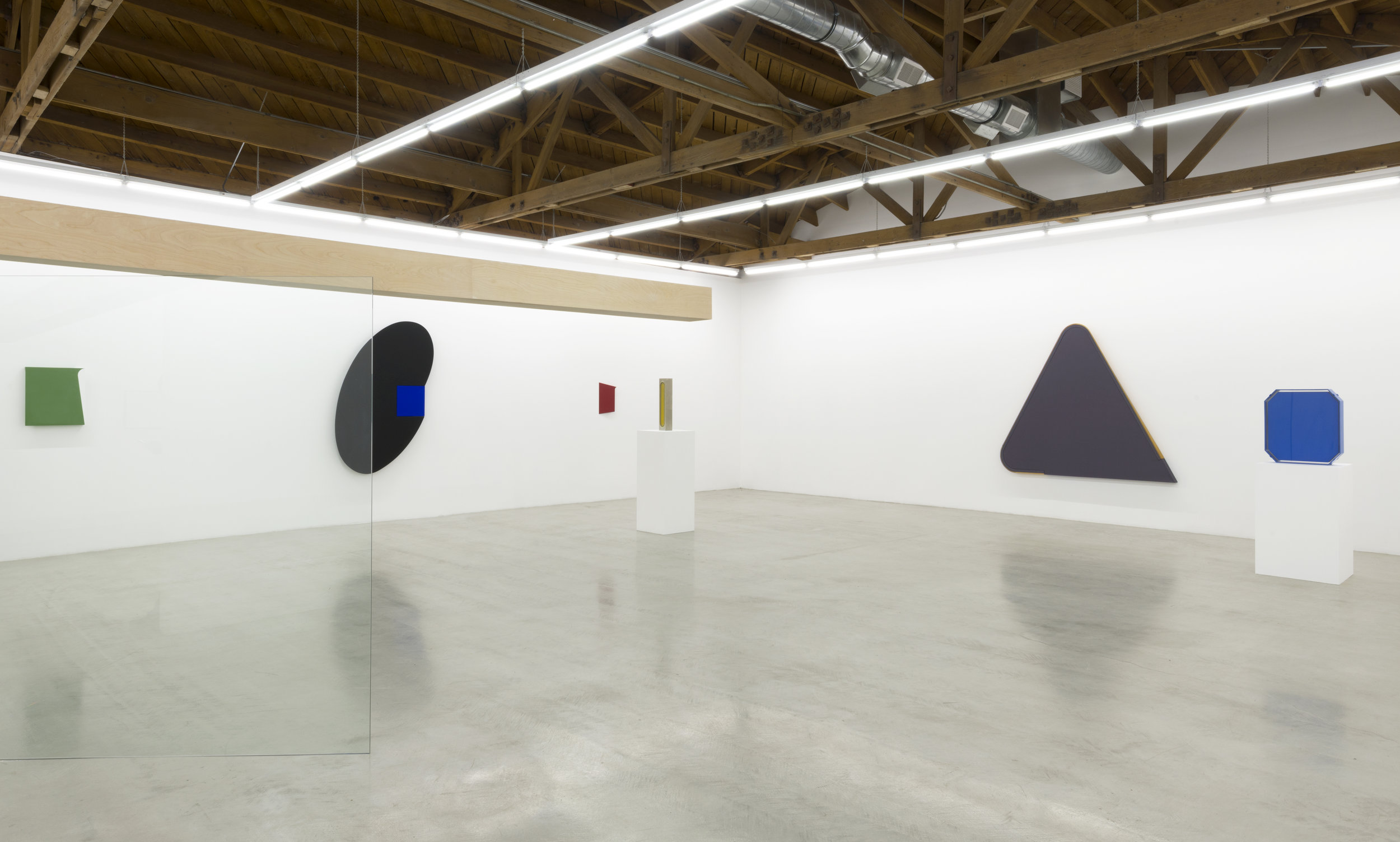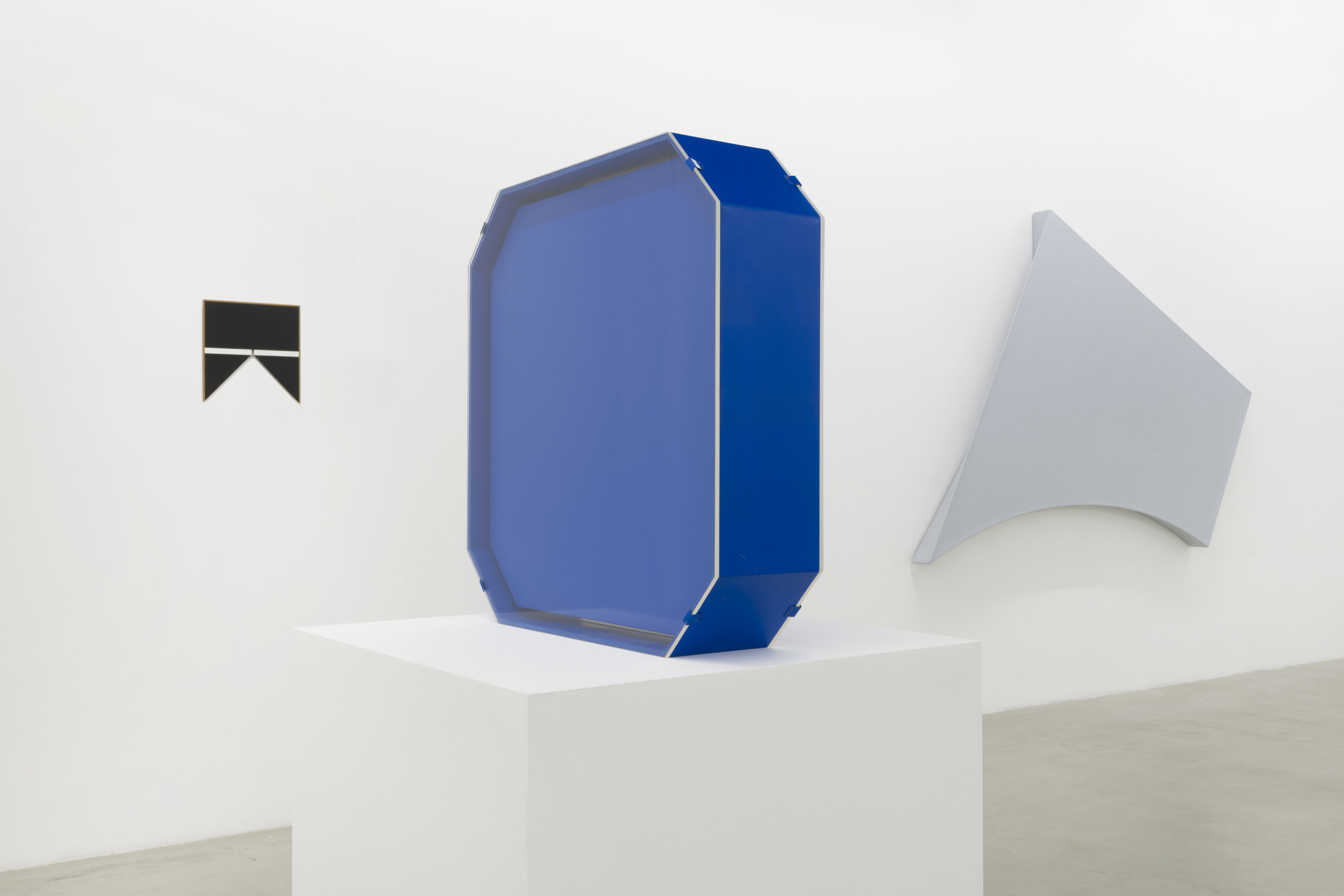TONY DeLAP

Interview by Amanda Quinn Olivar, West Coast Editor
Tony DeLap is a pioneer artist of West Coast minimalism, LA’s Cool School of Finish Fetish, Op Art, and the Light and Space movement. He was born in 1927 in Oakland, California, attended the San Francisco Art Institute and the Claremont Graduate School, and then moved to Southern California where he taught at University of California, Irvine. He had his first solo exhibition at Oakland Museum in 1960. Tony participated in both the 1965 Responsive Eye at MOMA and the 1966 Primary Structures exhibition at the Jewish Museum. He has had retrospectives at the Oceanside Museum of Art in 2013, the Orange County Museum of Art in 2000, and the San Jose Museum of art in 2001. Major museum collections include the New York Museum of Modern Art, The Whitney Museum, the Guggenheim museum, the Tate Gallery in London, the LA County Museum of Art, Albright-Knox Art Gallery in Buffalo, New York, and Le Musée cantonal des Beaux-Arts in Lausanne, Switzerland. DeLap is represented by Parrasch Heijnen Gallery.
Amanda Quinn Olivar (AQO): How would you describe your work? It seems “the edge” is consistent throughout much of your career. Why do you find it so important?
Tony DeLap (TD): My work has been described as hard-edge geometric abstraction. I developed a hyperbolic edge on the painting that allows the viewer to see changes in the painting’s shape as one moves across the surface of the work. From a single viewpoint, one misses those changes. Often a painting edge is cut back toward the wall and that reconfigures the shadow cast by the painting, as well as the painting itself.
Ectoplasm Should Not Be Too Kinky, 1982, acrylic on canvas, 52-1/2 x 50 x 4 inches
Pips Eclipse, 1993, acrylic on aluminum and wood, 100-1/2 x 13 x 9 inches
AQO: Did your fascination with magic as a young boy influence your life as an artist?
TD: The art of magic is a long and varied one. When a master magician performs "sleights” with a deck of cards, he is creating a beautiful work of art. The paintings of mine that I am particularly fond of are those that have a sense of magic to them.
A Special Occurrence, 1971, performance at the Marcel Duchamp Festival at UC Irvine organized Barbara Rose and Moira Roth
AQO: When did you become interested in architecture and design?
TD: When I was young, I built things: models, boats, airplanes. Models of hot dog stands were one of my favorites. I used wood, soap, found objects, whatever was available. Architecture came later.
Mabel At the Wheel, 1966, acrylic, plastic and lacquer, two pieces each measuring 12-3/4 x 12-3/4 x 12-3/4 inches
AQO: What are some of the most unconventional materials you’ve worked with?
TD: Over the years, I have used many, many materials--lacquer spray paint, metal, wood, glass, plexiglass, chipboard, graphic letters, fiberglass--and many techniques, using a heat gun to form plastic, using various adhesives to combine materials. I have worked with fine printmakers, wood pattern-makers, bronze casters, and metal fabricators.
Throw, 1961, mixed media, 19 x 23 inches
Mona Lisa, 1962, wood, glass, Plexiglas, acrylic, chipboard, 9-1/2 x 9-1/2 x 2 inches
AQO: What role does color play in your work?
TD: My use of color is very intuitive and important to me. I spend a great deal of time deciding and mixing.
Circus Time, 2017, acrylic on canvas, 42 x 84 x 2 inches
AQO: Agnes Martin connected you to your New York gallery, Robert Elkon, in the early 1960s. Please tell me about your friendship with Agnes.
TD: Agnes saw two of my double-sided sculptures, about 1963 at the San Francisco Museum of Art, and told Robert about them when she returned to New York. She sent her friends to my first show at the Elkon Gallery in 1965. We visited at her studio whenever we were in town; she introduced us to some of her artist friends, and one day several of us walked on the Brooklyn Bridge.
Floating Lady III, 1972, Robert Elkon Gallery
AQO: Why did you move to Southern California, and how did that come about?
TD: The British artist and critic John Coplans had been a good friend of mine when we were both teaching in San Francisco. We had also worked on an exhibition titled ‘Pop Art USA’ for the Oakland Art Museum, with him writing the catalog and me designing and producing the catalog. Some time after he moved to Los Angeles, he called to tell me he was joining the faculty of the new University of California, Irvine. He asked me to come to Southern California and discuss being hired as the first studio art professor. Kathy and l visited John in LA, toured the unfinished UCI campus, and decided to leave UC Davis, where I had been teaching, and join UCI.
1963 Cover of Pop Art USA at Oakland Museum, curated by John Coplans; Book cover design by Tony DeLap
AQO: You were the very first art professor at UC Irvine, and taught there for 30 years. Talk about balancing your studio practice and teaching.
TD: I enjoyed teaching at UC Davis, but it was a long commute from my life in San Francisco. I was able to find both very good living space in Corona del Mar, and studio space in nearby Costa Mesa just a few miles from UC Irvine. My actual teaching was two days a week, with some additional student time. So I was able to work as much as I wanted, and to also explore the museums and galleries in the LA area.
1949 Claremont Graduate School: Top-Jack Zajac, Center front-Tony DeLap, Paul Darrow
AQO: Which of your peers influenced your work the most?
TD: I was very influenced by aspects of the development of modernism in the 1940s, particularly by the works of Moholy-Nagy.
AQO: What is a typical day in the studio for you?
TD: Normally I spend several hours a day in the Corona del Mar studio, or the one in Washington state, if I am not traveling, buying supplies, checking projects outside the studio. This has been a particularly busy and productive couple of years for me. I have had shows at Parrasch-Heijnen in Los Angeles and Franklin Parrasch in New York. Parrasch Heijnen LA presented my work at Spotlight, 20th Century Pioneers, Frieze Art Fair, Randall Island Park, New York, and at Feature, Basel, in Switzerland.
Tony DeLap in studio; courtesy of Parrasch Heijnen Gallery
As you know, my Retrospective opens at the Laguna Museum of Art on February 25th. I have enjoyed very much working with Malcolm Warner the Museum Director and his staff. I have just received a preview copy of the catalog for that show, and I am truly delighted with the book. We have all worked on it, with our family helping when possible, our archivist/studio assistant very involved, and I am looking forward to the book’s distribution.
AQO: Please relate a memory that influenced or changed your life and career.
TD: I was extremely interested and impressed the first time I read the Language of Vision by Gyorgy Kepes.
AQO: What is your favorite art accident?
TD: I am very fond of making drawings and I was very pleased with the effect I achieved with spray painting on paper, in the early days.
Drawing for Love Sick, 1963, graphite and ink on paper, 19-1/2 x 21 inches
Tony DeLap: A Retrospective will be on view from February 25 - May 28, 2018 at Laguna Art Museum.
Feature image: Tony DeLap in studio; courtesy of Parrasch Heijnen Gallery.


